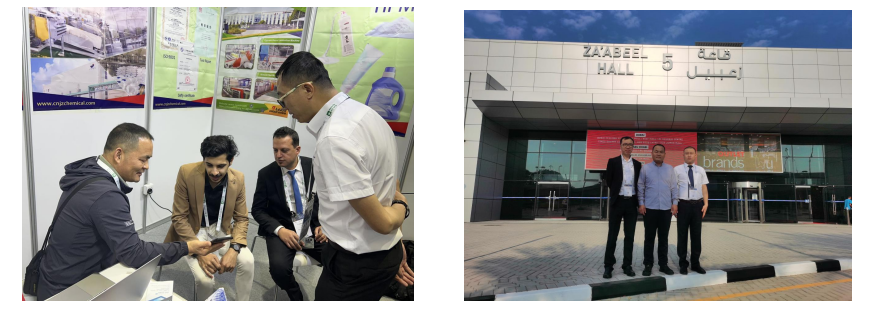
dets. . 24, 2024 08:38 Back to list
hydroxypropyl methylcellulose uses
The Versatile Applications of Hydroxypropyl Methylcellulose
Hydroxypropyl methylcellulose (HPMC) is a semisynthetic compound derived from cellulose, widely utilized for its unique properties that enhance various products across several industries. As a non-toxic and biodegradable material, HPMC serves as a vital ingredient in pharmaceuticals, food, cosmetics, and construction, offering functionalities that improve product performance and user experience. This article delves into the diverse applications of hydroxypropyl methylcellulose, highlighting its significance in multiple sectors.
Pharmaceutical Applications
In the pharmaceutical industry, HPMC is primarily used as an excipient in drug formulations. Its excellent film-forming and binding properties enable it to enhance the stability and release profile of active pharmaceutical ingredients (APIs). HPMC is frequently employed in the production of controlled-release capsules and tablets, ensuring a steady release of medication over time. This controlled release is crucial for maintaining therapeutic levels of drugs in the bloodstream, which can be beneficial for chronic conditions requiring long-term medication.
Moreover, HPMC's properties make it an effective suspending agent, providing uniform dispersion of insoluble particles in liquid formulations. This is especially important in ensuring the efficacy of certain medicines that may otherwise settle at the bottom of their containers. Its use as a coating agent also helps protect sensitive ingredients from degradation caused by moisture, light, or air, thereby extending the shelf life of pharmaceutical products.
Food Industry
HPMC plays a significant role in the food industry, where it serves as a thickener, emulsifier, and stabilizer. Its ability to retain water and improve texture makes it a popular choice in various food products, from sauces and dressings to baked goods and dairy items. In gluten-free products, HPMC helps mimic the textural qualities of gluten, providing the elasticity and chewiness often lacking in such formulations.
In addition, HPMC is utilized as a low-calorie food ingredient, which helps to reduce fat content while maintaining the desired mouthfeel and viscosity. Its non-allergenic nature further adds to its appeal, making it suitable for a wide range of consumers. With an increasing focus on health and wellness, HPMC's role in food formulations is likely to grow as manufacturers seek to provide healthier alternatives without compromising on taste or texture.
hydroxypropyl methylcellulose uses

Cosmetic and Personal Care Products
The cosmetics and personal care industry also benefits significantly from the use of hydroxypropyl methylcellulose. It acts as a thickening agent, providing creams, lotions, and gels with a smooth and consistent texture. HPMC enhances the stability of products by preventing separation and allowing for a uniform distribution of ingredients. Additionally, this compound serves as a moisturizer due to its hygroscopic nature, attracting water and helping to keep the skin hydrated.
HPMC is commonly used in hair care products, as it provides excellent film-forming capabilities that improve shine and manageability without leaving a greasy residue. Its versatile properties make it an essential ingredient in a wide array of cosmetic formulations, catering to the growing demand for effective and safe beauty products.
Construction Industry
In the construction industry, hydroxypropyl methylcellulose is employed as a water-retaining agent and thickener in various building materials, including mortars, plasters, and adhesives. Its ability to improve workability and prolong open time allows for better application and adhesion of construction materials. By enhancing the performance of these products, HPMC contributes to the durability and sustainability of construction projects.
Moreover, HPMC serves as a binding agent in the production of wall coatings and tiles, improving adhesion and reducing the risk of cracking. Its use in construction not only promotes efficient application but also supports environmentally friendly building practices, making it a valuable component in modern construction materials.
Conclusion
Hydroxypropyl methylcellulose is a multifunctional ingredient with a wide range of applications across several industries. Its unique properties make it indispensable in pharmaceuticals, food, cosmetics, and construction, where it enhances product performance, stability, and user satisfaction. As research and development continue, the versatility of HPMC is expected to pave the way for innovative applications, reinforcing its importance in various sectors.
-
Versatile Hpmc Uses in Different Industries
NewsJun.19,2025
-
Redispersible Powder's Role in Enhancing Durability of Construction Products
NewsJun.19,2025
-
Hydroxyethyl Cellulose Applications Driving Green Industrial Processes
NewsJun.19,2025
-
Exploring Different Redispersible Polymer Powder
NewsJun.19,2025
-
Choosing the Right Mortar Bonding Agent
NewsJun.19,2025
-
Applications and Significance of China Hpmc in Modern Industries
NewsJun.19,2025







